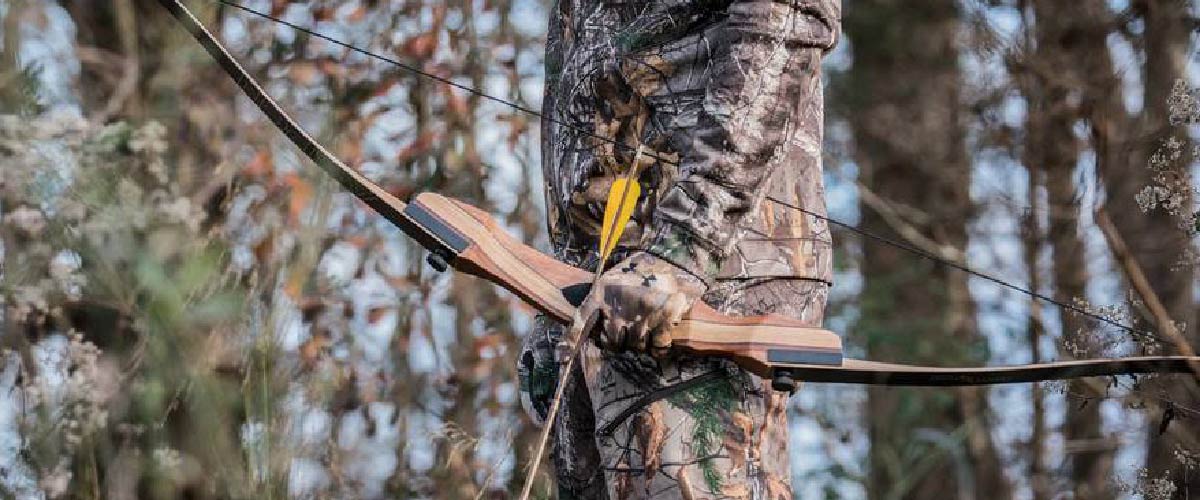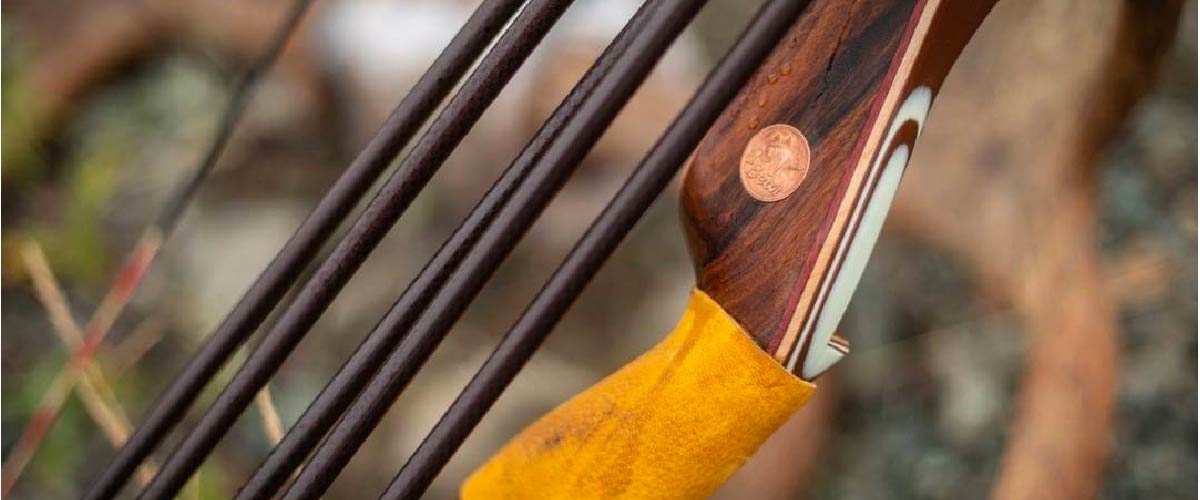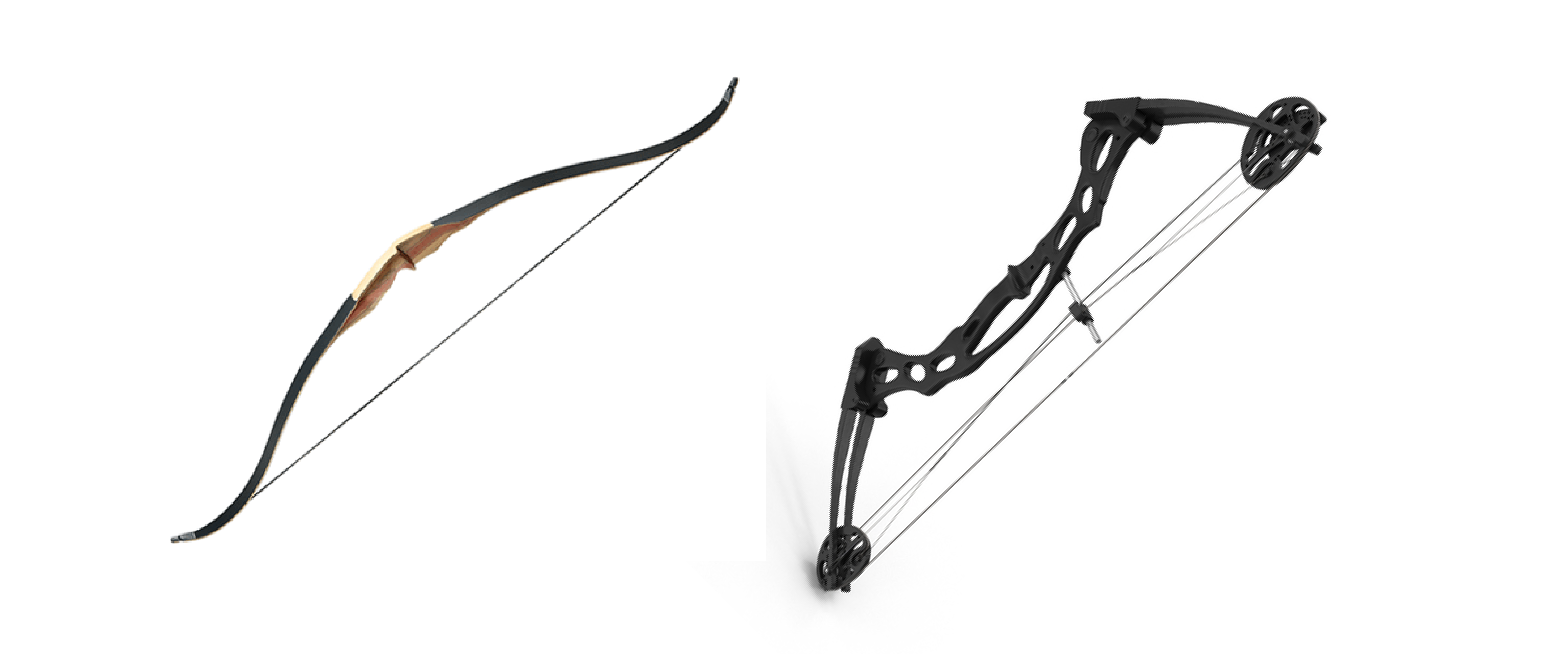Recurve Bow vs Compound Bow
By Larry McCoy |
Recurve bows are modern versions of traditional longbows, while compound bows make use of everything modern technology has to offer. Each type has unique features, and the decision of which to use will depend greatly on the individual archer’s needs, preferences, and even aesthetics.
Recurve Bows and Traditional Bows

It’s easiest to understand the recurve bow by understanding the history of bows, and its relationship to the traditional bow. A recurve bow is essentially a modern version of a traditional bow.
A traditional bow is what you think of when you picture Robin Hood, or other medieval archers and battles. These are not outfitted with pulley systems or other accessories invented by modern technology, and may appeal to archers who want to feel some kind of relationship with the long history of archery. Traditional bows require quite a bit of physical strength to pull back the drawstring.

The two types of traditional bows are long bows and recurve bows. A long bow has a straight grip and the classic half-moon shape. It has a thicker depth than a recurve bow, but a thinner width, and the greater depth makes it more difficult to shoot accurately.
A recurve bow is named for the curves at each end of the bow. At each end, the bow curves away from the archer. While a longbow can be drawn as far as the archer can draw it, a recurve bow has a set draw length. The curve makes it easier to shoot accurately.
Comparison: Recurve vs. Compound

Now that we understand how recurve bows fit into the greater field of archery, we can compare them directly to compound bows.
Recurve Bows
Pros: The recurve bow has several unique features to consider when you are deciding what bow to purchase. Many hunters love recurve bows because they feel closer to nature, without completely casting aside modern technology and inventions. They are light and easy to carry, and easier to shoot than traditional bows.
Cons: However, recurve bows rely entirely on your strength rather than using a pully system, which means they are more difficult to shoot than compound bows or crossbows. They require more strength and still have less power, meaning you have to get closer to the target. This can be difficult if you are hunting game that scares easily or is likely to pick up on your scent.
The Bottom Line: If you want a bow that you will have to master and brings you closer to archery’s ancient history, a recurve bow may be the right fit for you. Just be prepared to log those practice hours, and to work on your stealth so that you can get close enough while hunting to take down game.
Compound Bow
Pros: A compound bow also requires skill and practice, but it is easier to shoot and to master than the recurve bow. Compound bows do not rely as much on physical strength, and they are also able to shoot from greater distances. This means that extreme stealth is not as necessary if you are bowhunting with a compound bow. They are also highly customizable, and you can add accessories such as scopes and stabilizers.
Cons: Compound bows are definitely a modern contraption, with a system of wheels and pulleys assisting you with every arrow. This complex system also requires more maintenance, and you will need to learn how to string, tune, and otherwise maintain your bow. You’ll need some mechanical expertise in order to keep your bow in the best condition. Compound bows have a set draw length, so you’ll need to be careful to get the correct size for you. They are also larger and heavier than recurve bows, making them more difficult to transport.
The Bottom Line: If you are looking for the full power a bow has to offer, and want to use your bow for hunting from greater distances, the compound bow is the right choice for you. Just be prepared to carry a heavier and larger machine, and start learning how to maintain the instrument.
In Conclusion
Many archers start with a compound bow, as they are easier to shoot, which makes them beginner-friendly. As you practice on a compound bow, you may become ready for the challenge of a recurve bow.
Your experience, skill, and strength will largely determine what kind of bow is right for you. And there’s no reason you can’t have both, and take them out on different occasions!